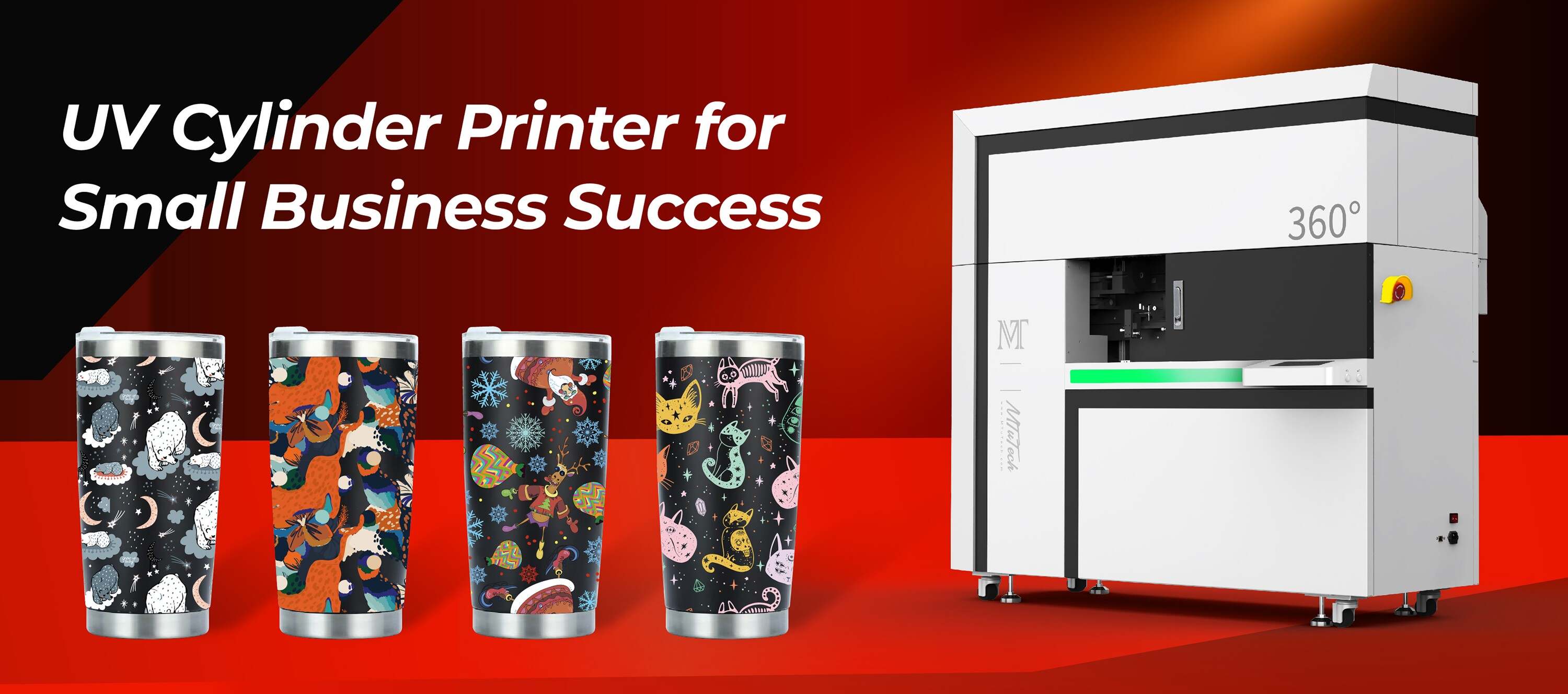Understanding Adhesion Techniques for UV Printing on Cylinders
Introduction
In recent years, UV printing has emerged as a leading choice for custom printing solutions, particularly for cylindrical objects. This technique leverages ultraviolet light to cure inks and coatings almost instantly, allowing for vibrant prints on a variety of substrates. However, one of the significant challenges faced by manufacturers is achieving proper adhesion on cylindrical surfaces. This blog post delves into the various adhesion techniques essential for UV printing on cylinders, ensuring high-quality results and durability for your printed products.
Key Concepts in UV Printing on Cylinders
What is UV Printing?
UV printing is a digital printing technology that uses ultraviolet light to dry or cure ink as it is printed. It provides several advantages, including:
·
Immediate drying time.
·
·
Vibrant and high-resolution images.
·
·
Ability to print on unconventional substrates.
·
·
Less environmental impact due to reduced VOC emissions.
·
Challenges of Adhesion on Cylindrical Surfaces
Printing on cylinders poses unique challenges primarily due to the curvature and material properties involved. Some challenges include:
·
Difficulty in achieving uniform ink distribution.
·
·
Risk of ink peeling or scratching during use.
·
·
Variability in surface texture affecting ink adhesion.
·
Understanding Adhesion Techniques
Surface Preparation
Effective adhesion begins long before the ink is applied. Surface preparation is critical for enhancing the bonding between the ink and the substrate. Common preparation methods include:
·
Cleansing: Removing dust, oil, and other contaminants using solvents or cleaning agents.
·
·
Mechanical Abrasion: Using sandpaper, brushes, or other tools to roughen the surface, increasing the area for adhesion.
·
·
Priming: Applying a primer that improves ink adhesion and provides a suitable surface for printing.
·
Choosing the Right Ink
Not all inks have the same adhesion properties. When selecting ink for UV printing on cylinders, consider the following:
·
Inks should be formulated specifically for the substrate material.
·
·
Choosing low-viscosity inks can improve absorption and adhesion.
·
·
Check for inks with additives that promote adhesion and increase durability.
·
Utilizing Adhesion Promoters and Topcoats
Adhesion promoters are chemical agents that improve the bonding between the substrate and the ink. They can be crucial in achieving durability in prints. Likewise, applying a topcoat can offer protective qualities, enhancing adhesion and prolonging the life of the print. Factors to consider include:
·
Type of Promoter: Evaluate compatibility with the ink and substrate.
·
·
Application Method: Spray, brush, or roller applications can vary in effectiveness.
·
Techniques for Effective Adhesion
Temperature Control
During UV printing, temperature plays a vital role in adhesion. Higher temperatures can improve adhesion but pose risks such as bubbling or distortion of the substrate. Maintain optimal printing temperatures as specified by the ink and substrate manufacturers to ensure successful adhesion.
Ink Curing Techniques
The curing process is essential in achieving the right adhesion. UV lamps must be positioned correctly to ensure even exposure across the cylindrical surface. Consider these techniques for effective curing:
·
Spot Curing: For critical areas requiring enhanced strength, utilize spot curing stations.
·
·
Adjustable Speed: Adjusting the speed of the cylinder through the printer can help maintain consistent curing conditions.
·
Testing Adhesion and Quality Control
Before proceeding with full-scale production, conducting adhesion tests can save time and resources. Various methods can be used, including:
·
Tape Tests: Applying a piece of adhesive tape to the printed area and then removing it to check for ink transfer.
·
·
Scratch Tests: Assessing whether the print withstands mechanical abrasion without peeling or smudging.
·
Regular quality control checks are necessary to maintain the standards of adhesion and overall print quality.
Conclusion
The success of UV printing on cylindrical substrates hinges on effective adhesion techniques. From proper surface preparation to the selection of appropriate inks and curing methods, each aspect plays a vital role in achieving high-quality prints. With the right approaches, manufacturers can produce durable and visually striking products that meet customer expectations. To explore innovative solutions for UV printing, explore our high-quality Cylinder UV printers here and elevate your printing capabilities.
FAQ
What materials can be printed using UV printing on cylinders?
Most common materials for UV printing include plastic, metal, glass, and wood. The key is to ensure that the ink and primer are compatible with the substrate.
How long do UV prints typically last?
When conducted under optimal conditions with proper adhesion techniques, UV prints can last several years, even outdoors, depending on the surface and exposure to elements.
Can adhesion techniques be used for other forms of printing?
Yes, many of the adhesion techniques used in UV printing can be adapted for other printing methods, such as solvent or water-based inks, but the materials and processes may vary.
What is the role of humidity in UV printing adhesion?
High humidity can negatively affect adhesion by causing ink to become more viscous and difficult to cure. It is essential to maintain controlled humidity levels in the printing environment.
Is there a risk of ink fading in UV printing?
While UV inks are known for their durability, sustained exposure to harsh sunlight can lead to fading. Using UV-resistant inks and coatings can mitigate this risk.

